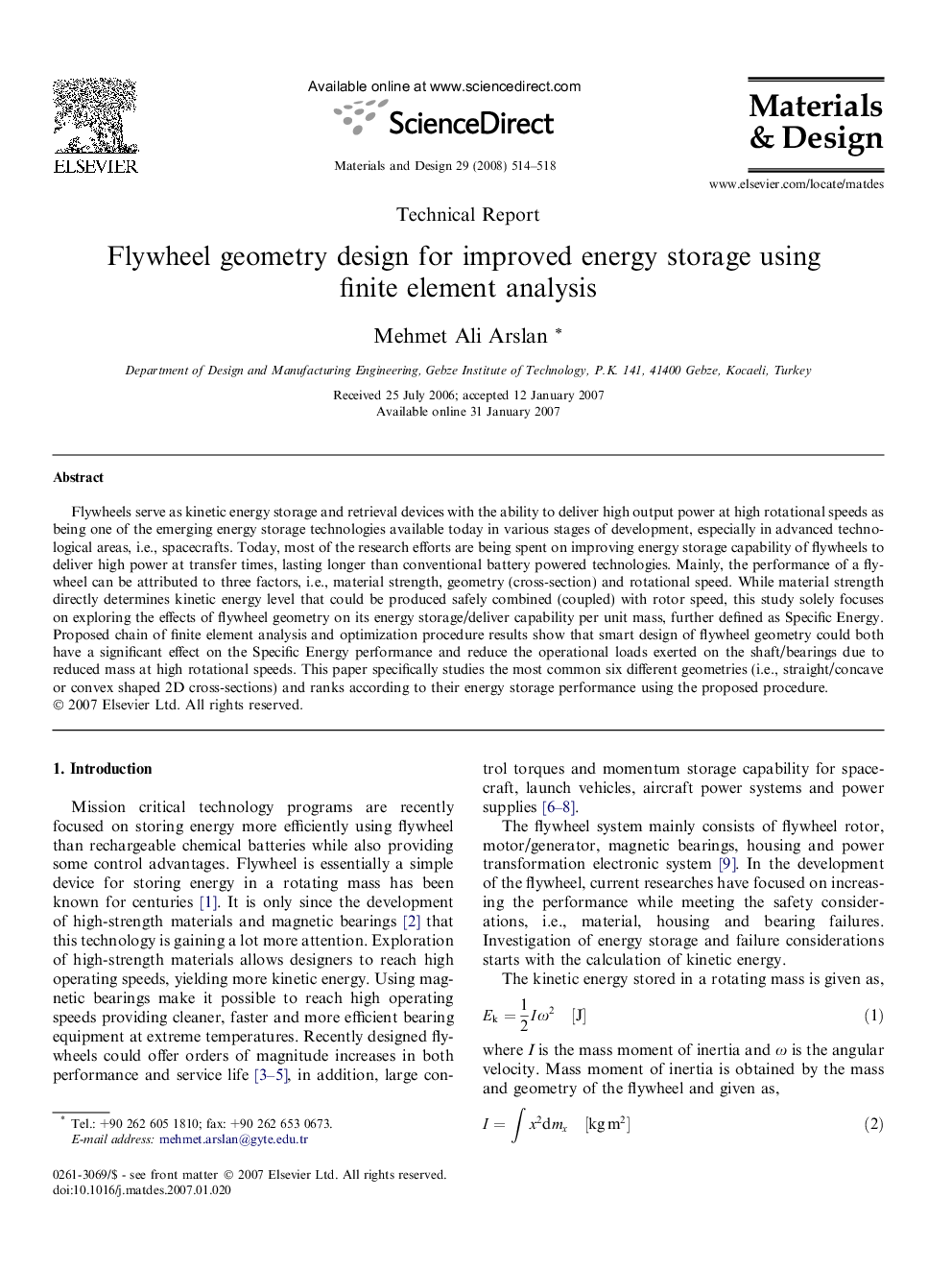| Article ID | Journal | Published Year | Pages | File Type |
|---|---|---|---|---|
| 833332 | Materials & Design (1980-2015) | 2008 | 5 Pages |
Flywheels serve as kinetic energy storage and retrieval devices with the ability to deliver high output power at high rotational speeds as being one of the emerging energy storage technologies available today in various stages of development, especially in advanced technological areas, i.e., spacecrafts. Today, most of the research efforts are being spent on improving energy storage capability of flywheels to deliver high power at transfer times, lasting longer than conventional battery powered technologies. Mainly, the performance of a flywheel can be attributed to three factors, i.e., material strength, geometry (cross-section) and rotational speed. While material strength directly determines kinetic energy level that could be produced safely combined (coupled) with rotor speed, this study solely focuses on exploring the effects of flywheel geometry on its energy storage/deliver capability per unit mass, further defined as Specific Energy. Proposed chain of finite element analysis and optimization procedure results show that smart design of flywheel geometry could both have a significant effect on the Specific Energy performance and reduce the operational loads exerted on the shaft/bearings due to reduced mass at high rotational speeds. This paper specifically studies the most common six different geometries (i.e., straight/concave or convex shaped 2D cross-sections) and ranks according to their energy storage performance using the proposed procedure.
